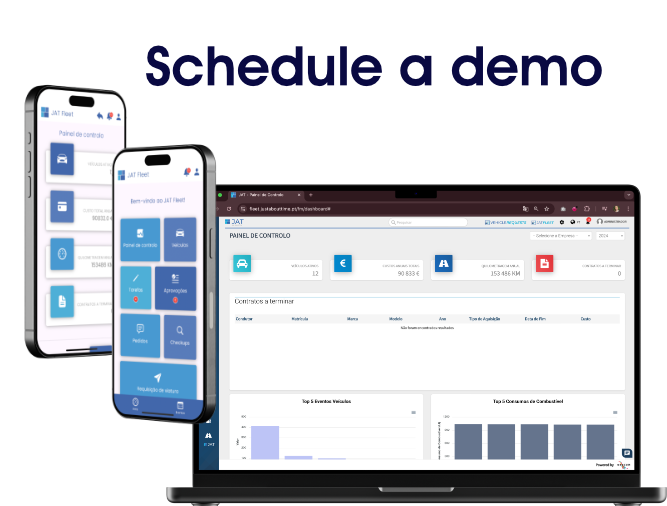Multi-driver management: The challenge of keeping your fleet organised and efficient
Managing a corporate fleet is already a complex task, but when we’re talking about multiple drivers using different vehicles, the challenges multiply. The fundamental question that many companies face is simple: how do we ensure that each vehicle is being used correctly, without waste or operational risks? Without an efficient system, a lack of traceability can lead to high costs, excessive wear and tear on vehicles and safety problems that could be avoided. However, companies that adopt a more strategic and technology-orientated approach are turning this difficulty into an operational advantage.
The problem of lack of traceability: who’s driving what?
One of the biggest challenges in fleet management with multiple drivers is the lack of visibility into who is using each vehicle at any given time. Without a system that automatically records vehicle assignments, it becomes difficult to hold drivers accountable for traffic ticket, damage or even excessive fuel consumption.
In many companies, these issues are resolved manually, through log sheets or emails exchanged between teams, a method prone to mistakes, forgetfulness and lack of precision. This results in problematic situations such as drivers leaving vehicles without fuel or breakdowns without an identified person in charge. Fleet traceability is not just a matter of organization, but a necessity for maintaining operational efficiency and ensuring cost savings.
The impact of driver behavior on fleet safety
Drivers’ behavior on the road has a direct impact on fleet safety and operating costs. Excessive speed, harsh braking and prolonged driving times can increase the risk of accidents, shorten the life of vehicles and increase fuel consumption.
When there are multiple drivers sharing vehicles, monitoring behavior becomes even more essential. If a fleet manager doesn’t have access to real-time data, they won’t be able to identify drivers with aggressive driving patterns or which vehicles are suffering the most wear and tear. Fleet safety cannot be left to chance, and implementing fleet management technology can help ensure that all drivers comply with good driving practices.

Vehicle allocation chaos and lack of planning
nother major problem in driver management is the allocation of vehicles without a structured system. Without a centralized platform, it is common for vehicles to be constantly overloaded, while others remain idle, resulting in an inefficient distribution of the fleet.
This can lead to conflicts between teams, a lack of availability for critical tasks and, in the long term, uneven wear and tear on vehicles. The absence of efficient fleet planning also directly affects employee productivity, since the availability of a vehicle can be the difference between completing a job on time or suffering unnecessary delays.
Ensuring that vehicles are allocated optimally and without excessive bureaucracy is essential for a functional and productive fleet.
The challenge of cost management: fuel, maintenance and traffic ticket
Controlling fleet operating costs with multiple drivers is a constant challenge. Fuel remains one of the biggest variable costs and, without a system that allows specific consumption to be associated with each driver, it becomes impossible to identify patterns of waste or inefficient use.
In addition, preventive fleet maintenance can be jeopardized if there is no structure to record who has used a particular vehicle and under what conditions. When drivers are not held accountable for vehicle maintenance, it is common for small problems to go unnoticed until they result in costly breakdowns.
The same goes for traffic tickets: without a system that quickly identifies the driver responsible, the company could end up taking on costs that shouldn’t be theirs.
How can you solve these problems and improve driver management?
The solution to these challenges lies in technology, organization and well-defined processes. A fleet management system that allows vehicles to be identified and assigned in real time avoids confusion and ensures that each driver knows exactly which vehicle they should be using.
With an automated system, the company can record each driver’s behavior, from driving patterns to consumption, creating a detailed history that allows for quick and effective interventions.
Digitizing fleet management also makes it easier to centralize vehicle orders, ensuring that resources are distributed in the best way and avoiding inefficiencies.
By adopting intelligent technology, it is possible to create automatic alerts for servicing, monitor the condition of vehicles and associate fuel consumption with each user. This allows the company to have a clear view of fleet performance and make strategic decisions to reduce costs and improve operational efficiency.
The future of driver management: greater control, fewer complications
Managing multiple drivers doesn’t have to be chaotic. With the right structure, the right technology and optimized processes, your company can turn one of the biggest challenges in fleet management into a competitive advantage.
Fleet traceability, driver behavior monitoring and process automation make the operation more transparent, safe and efficient.
Companies that invest in a more organized and digitalized approach can reduce waste, improve vehicle utilization and ensure smooth operations. The future of fleet management lies in solutions that allow greater control without increasing the complexity of the process.




Why JAT Fleet | Product | Blog | Book a Demo | Get a Quote

